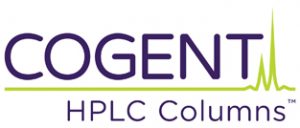Sensitivity of an HPLC chromatogram can be said to be the ability to observe all analytes in a sample, even a very small quantity.
One of the most important factors in sensitivity is the “Signal to Noise Ratio” of the detector you are using which can be defined as the ratio of analyte signal to background noise, which derives from the method of detection and the detector itself. In layman’s terms, think of looking into the sky during the day; you cannot see the stars (signal) due to the signal being over run by the noise (daylight). At night time, in the more remote locations, one can easily observe the stars. What should be noted is that the “signal” is the same, day or night, it is the background “noise” that is reduced at night. Also, using your eyesight versus using a telescope will change your ability to “detect” the stars. In HPLC a wide variety of detectors may be implemented, including UV absorption, mass spectrometry, refractive index, CAD, ELSD, and many more.
There are two main things you can do to improve sensitivity of your HPLC chromatogram without changing your detection method: Increase signal or decrease noise. Examples of increasing signal may include operating at the adsorption maximum in UV detection or optimizing ionization in MS or one could pre concentrate the samples. Decreasing noise may mean using a high purity HPLC grade solvent, since impurities may increase its absorbance. One could also change detection methods.
The HPLC column used plays only an indirect role in affecting sensitivity; sharper peaks mean more concentrated or higher “signal”. Therefore high efficiency columns may be able to provide you with greater “sensitivity” due to less band broadening and therefore greater signal. However, it is important to remember that it is not valid to describe “the sensitivity of the column” and sensitivity has nothing to do with selectivity of the column.


